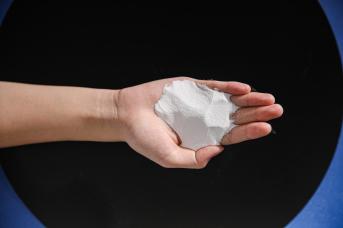In recent years, with the continuous growth of production capacity in the domestic polypropylene industry, the production of polypropylene has been increasing year by year. Due to the increasing demand for automobiles, household appliances, electricity, and pallets, the production of impact resistant copolymer polypropylene is growing rapidly. The expected production of impact resistant copolymers in 2023 is 7.5355 million tons, an increase of 16.52% compared to last year (6.467 million tons). Specifically, in terms of subdivision, the production of low melt copolymers is relatively large, with an expected output of about 4.17 million tons in 2023, accounting for 55% of the total amount of impact resistant copolymers. The proportion of production of medium high melting and impact resistant copolymers continues to increase, reaching 1.25 and 2.12 million tons in 2023, accounting for 17% and 28% of the total.
In terms of price, in 2023, the overall trend of impact resistant copolymer polypropylene was initially declining and then rising, followed by a weak decline. The price difference between co polymerization and wire drawing throughout the year is between 100-650 yuan/ton. In the second quarter, due to the gradual release of production from new production facilities, coupled with the off-season of demand, terminal product enterprises had weak orders and overall procurement confidence was insufficient, resulting in an overall decline in the market. Due to the significant increase in homopolymer products brought about by the new device, price competition is fierce, and the decline in standard wire drawing is increasing. Relatively speaking, impact resistant copolymerization has shown strong resistance to falling, with the price difference between copolymerization and wire drawing expanding to a high of 650 yuan/ton. In the third quarter, with continuous policy support and strong cost support, multiple favorable factors drove the rebound of PP prices. As the supply of anti-collision copolymers increased, the price increase of copolymer products slowed down slightly, and the price difference of copolymer drawing returned to normal.

The main amount of plastic used in cars is PP, followed by other plastic materials such as ABS and PE. According to the relevant industrial branch of the Automobile Industry Association, the plastic consumption per economy sedan in China is about 50-60kg, heavy-duty trucks can reach 80kg, and the plastic consumption per medium and high-end sedan in China is 100-130kg. The usage of automobiles has become an important downstream of impact resistant copolymer polypropylene, and in the past two years, the production of automobiles has continued to grow, especially with a prominent increase in new energy vehicles. From January to October 2023, the production and sales of automobiles reached 24.016 million and 23.967 million respectively, an increase of 8% and 9.1% year-on-year. In the future, with the continuous accumulation and manifestation of policy effects of stable economic growth in the country, coupled with the continuation of local car purchase subsidies, promotional activities and other measures, it is expected that the automotive industry will perform well. It is expected that the usage of impact resistant copolymers in the automotive industry will also be considerable in the future.
Post time: Dec-25-2023


